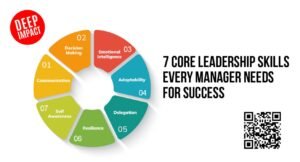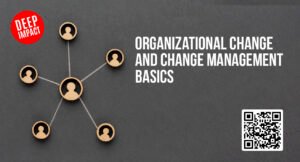In recent years, leaders have faced one undeniable truth: uncertainty has become the only constant. Plans that once stretched confidently across three to five years are now fragile in the face of global disruption, technological shifts, and unexpected crises. The old mindset of controlling every outcome has proven insufficient. Instead, organisations that thrive are those whose leaders cultivate leadership agility, enabling their people to respond with resilience rather than fear.
Why uncertainty has become the only constant in business

The modern business environment is shaped by forces that change at unprecedented speed. Globalisation has created interdependence across economies. Technological innovation disrupts entire industries within months, not years. Societal shifts—from hybrid working to sustainability expectations—transform customer behaviour and workplace dynamics.
In this landscape, predictability is rare. Leaders who continue to treat uncertainty as a temporary disturbance risk being caught off guard repeatedly. The reality is that disruption is not an exception to the rule—it is the rule itself. Embracing uncertainty as a permanent condition is the first step towards building resilient organisations.
The mindset shift required: from control to adaptability
One of the greatest challenges leaders face is letting go of control. Traditional leadership emphasised forecasting, planning, and eliminating risks. But control in a volatile world is often an illusion. The more leaders try to control every detail, the more rigid and brittle their organisations become.
The shift required is towards adaptability. Instead of asking how every variable can be predicted, leaders must ask how they and their teams can remain flexible, no matter what arises. Adaptability is underpinned by three qualities: humility to admit we do not have all the answers, curiosity to explore new possibilities, and courage to act decisively even when clarity is incomplete.
Leaders who embrace adaptability model in their teams understand that it is acceptable not to know everything, but it is essential to keep learning, adjusting, and moving forward. This is at the core of leadership resilience strategies that keep organisations moving despite disruption.
Leadership behaviours that drive leadership agility and resilience
Leadership agility is practised through consistent behaviours, not abstract theory. The following practices are vital:
- Encouraging experimentation: Agile leaders allow small-scale testing of ideas, learning quickly, and making adjustments. Failure is reframed as feedback, not final defeat.
- Communicating with transparency: In times of disruption, uncertainty about the unknown is compounded when leaders remain silent. Honest and open communication builds trust and confidence.
- Empowering decision-making: Leaders who decentralise authority and empower teams to make decisions closer to the action create faster, more responsive organisations.
- Balancing realism with optimism: Agility thrives when challenges are acknowledged honestly while hope and possibility are kept alive. This balance strengthens resilience and prevents despair.
These behaviours build cultures where teams embrace change, innovate under pressure, and remain engaged even in difficult times.
Examples of organisations that thrive by embracing change
There are countless illustrations of how leadership agility allows organisations to succeed in disruption.
When the pandemic forced industries into rapid adaptation, some organisations froze, waiting for conditions to stabilise. Others moved quickly. A global fitness brand shifted to digital classes within weeks, reaching a far larger audience online than they had in their physical studios. What began as a necessity became a long-term growth opportunity.
A regional bank facing lockdowns realised customers could no longer rely on branch access. Instead of slowing down operations, they accelerated their digital transformation, launching mobile and online services within months. Not only did this address the immediate crisis, but it also positioned them strongly for the future, expanding their customer base through convenience and accessibility.
These organisations succeeded not because they avoided uncertainty, but because they used it as a catalyst for reinvention.
Steps leaders can take to embed agility within their teams
Agility is not created overnight. It is built gradually through consistent practices that shape mindset and culture. Leaders can take several practical steps to embed leadership agility into their teams:
- Create a safe-to-fail culture: Encourage intelligent risk-taking by recognising lessons learned as much as successes achieved.
- Build cross-functional collaboration: Break down silos and bring diverse perspectives together. Agility is stronger when solutions are co-created across different parts of the organisation.
- Make time for future-focused conversations: In meetings, reserve space not only for problem-solving but also for exploring opportunities. Ask, “What would success look like six months from now, regardless of today’s challenges?”
- Invest in continuous learning: Encourage people to upskill, explore new tools, and remain curious. A learning mindset ensures adaptability in the face of change.
- Model adaptability as a leader: Leaders who embody agility themselves inspire their teams to follow. Staying calm under pressure, showing humility, and acting decisively demonstrate what adaptability looks like in practice.
For leaders seeking to apply these principles, structured programmes such as Leadership Development and Change Management Training provide the tools to embed agility across teams.
Turning Uncertainty into Opportunity
Uncertainty is no longer a passing storm—it is the climate in which we now lead. The desire for stability may be strong, but it is adaptability that determines survival and success. Leaders who practise leadership agility and resilience create cultures where people are prepared not just to endure change, but to thrive through it.
The organisations that will stand out in the future are those that view uncertainty not as a threat but as an opportunity to adapt, innovate, and grow. Leadership agility is not a skill reserved for extraordinary moments—it is a daily practice that prepares teams to flourish, whatever disruption comes next.
For more insights, explore Deep Impact’s resources on Organisational Change and Change Management Basics.
FAQs
What is leadership agility and why is it important?
Leadership agility is the ability to adapt quickly and effectively in uncertain or disruptive environments. It helps leaders guide teams with resilience and innovation.
How can leaders thrive in uncertain times?
By shifting from control to adaptability, fostering trust, empowering teams, and building cultures that embrace change, leaders can thrive in uncertainty.
What are some practical ways to build leadership resilience strategies?
Practical ways include encouraging experimentation, transparent communication, empowering decisions at all levels, and modelling adaptability.
How do organisations benefit from agile leadership?
Organisations become more innovative, resilient, and better equipped to respond to disruption, positioning themselves for long-term success.
Read More: Leadership Programs That Empower Managers to Become Confident, High-Impact Leaders







